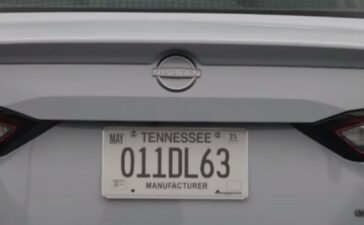Hi everyone! Have you ever experienced the feeling of heart coming to your mouth because you see the check engine light turn on? After that you are going to ask yourself “What’s wrong with my car? Is it a serious issue? Is it going to cost a lot?”. It’s safe to say we have all been there at least once and know the feeling.
This is the reason I have prepared this thorough guide to help you understand the reason behind the check engine light pop-up, especially regarding the OBD II system.
Here we are going to help you understand these codes and decode these signals so that you know exactly what is happening with your car.
You might also enjoy: Jeep Check Engine Light: Causes And Solutions [2023]
Top 20 Most Common Check Engine Light Codes In 2023
Through the years I have worked with different cars at Check Engine Light. I have noted vehicles making progress but there are certain issues that have also kept up with these progress.
In 2023, I’ve gathered a list of the top 20 check engine light codes that I frequently encounter.
These codes give you a hint at what’s happening with your vehicle, and knowing them is a great help to encourage you to take immediate action, whether it’s going to be a DIY fix or an issue that requires heading to the shop. Here they are:
| Code | Meaning | Recommended Action |
| P0171 | System Too Lean | This code shows that there’s a large volume of oxygen in the exhaust. In this case, you might need to check for air leaks in the intake manifold, a malfunctioning fuel pump, or even dirty injectors. |
| P0300 | Random/Multiple Cylinder Misfire Detected | This code gives hints to issues regarding the cylinders, possibly because of bad spark plugs, ignition coil, or fuel injector. Regular maintenance is the best way to stop this problem from happening. |
| P0420 | Catalyst System Efficiency Below Threshold | Your vehicle’s catalytic converter is not working efficiently – which makes a replacement necessary. |
| P0455 | Evaporative Emission System Leak Detected | This code points to a fuel vapor leak or a malfunction in the EVAP system. Try to check for loose fuel caps or damaged hoses. |
| P0128 | Coolant Thermostat Temperature Below Regulating Temperature | This code could show a malfunction in the thermostat or low coolant level. You must consider either replacing the thermostat or refilling the coolant. |
| P0113 | Intake Air Temperature Circuit High Input | The issue here may be related to a faulty intake air temperature sensor, or there is a wiring short. In such cases, sensor replacement or wiring repair is every so often required. |
| P0101 | Mass Air Flow Sensor Circuit Range/Performance | This issue can usually be solved by cleaning or replacing the MAF sensor. |
| P0130 | O2 Sensor Circuit Malfunction | This code often indicates that the oxygen sensor is not working correctly. You can usually solve this issue by replacing the sensor. |
| P0013 | B Camshaft Position Actuator Circuit/Open | This might be because of a malfunctioning camshaft sensor, which usually requires replacement. |
| P0118 | Engine Coolant Temperature Circuit High Input | Try to check for low coolant levels or even a bad thermostat, and address the issue as necessary. |
| P0138 | O2 Sensor Circuit High Voltage | The oxygen sensor may be at fault here or there might be a short in the circuit. In this case, sensor replacement or electrical system inspection may be necessary. |
| P0325 | Knock Sensor Circuit Malfunction | This could give a hint of a failing knock sensor that needs replacement. |
| P0102 | Mass Air Flow Circuit Low Input | This code points to a problem with the Mass Air Flow (MAF) sensor or circuit. The sensor may be in need of either cleaning or replacement. |
| P0141 | O2 Sensor Heater Circuit Malfunction | This issue usually points to the need for a replacement of the O2 sensor with the integrated heater or related fuses. |
| P0301 | Cylinder 1 Misfire Detected | This problem could have a wide range from spark plugs to ignition coils. Try checking and replacing these parts as necessary. |
| P0174 | System Too Lean | Similar to P0171 but more specific to a different bank of cylinders. The same types of repairs or checks are recommended regarding this issue. |
| P0456 | EVAP Emissions Control System Leak Very Small | Try checking and replacing the fuel cap if necessary, and remember to inspect the EVAP system for any leaks. |
| P0133 | O2 Sensor Circuit Slow Response | The oxygen sensor may be responding too slowly to changes in the air-fuel mixture, and in this case, it is going to need replacement. |
| P0442 | Evaporative Emission Control System Leak Detected | This issue can usually be solved by checking the fuel cap for leaks or replacing the fuel cap. |
| P0121 | Throttle/Pedal Position Sensor/Switch A Circuit Range/Performance | This issue is usually solved by replacing the throttle position sensor or adjusting the sensor’s range. |
You can see that each code represents a precise issue that can be as slight as a minor inconvenience up to a serious threat to the vehicle’s optimal performance.
By gaining the required knowledge to understand the meaning of each code after understanding the codes you can be the judge that this issue needs a simple DIY fix or a trip to the mechanic.
By being proactive regarding your vehicle’s maintenance and repair you will be able to save time, money, and the stress caused by vehicle problems.
You might also enjoy: Why Did My Traction Control And Check Engine Light Come On?
History of Check Engine Light Codes
I got attracted to car diagnostics started years ago and as time passed it has grown and I have learned a lot about check engine light progress through the years.
We are talking about a history that goes as far as the early computer-controlled systems up to the standardized OBD II system we have today.
The journey of this progress has been a long one powered by the need for efficiency, environmental considerations, and, ultimately, the empowerment of technicians and vehicle owners like us.
you can also check this:
Understanding OBD II
The first time I started fiddling with cars the OBD II system was like a foreign language to me. But as I dived deeper into this concept, I realized it’s the heartbeat of modern diagnostics.
The system keeps track of your vehicle’s performance in real-time, with the help of a network of sensors. Whenever there is something off in the vehicle, it logs a fault code, and in some cases, it illuminates your check engine light.
After understanding this system I realized that this game changer system provided me with insights that were only available through seeking advice from an expert.
You might also enjoy: Everything You Need to Know About Mazda Check Engine Light
How We Fix Your Check Engine Light At Check Engine Light?
We are not only aiming to turn off the check engine light using quick fixes but to restore vehicles’ health and reliability.
Here’s our ten-step guide to not only erasing codes but also solving the underlying issues:
1. Customer Approval
One of the rules is that we only take action once you acknowledge and approve the proposed diagnostics and repairs. Remember that transparency is key.
2. Preparation and Safety Check
We aim to prepare your vehicle, making sure all safety protocols are followed. The main goal is to protect both your vehicle and our technicians.
3. Component Testing and Replacement
Depending on the diagnostics, malfunctioning parts are thoroughly tested and replaced with high-quality components that match or exceed the vehicle manufacturer’s standards.
4. In-Depth System Analysis
We investigate further and examine related systems to identify any conducive factors or potential future problems.
5. Software Updates
Vehicles today depend profoundly on software. We always check for updates or patches that may be able to resolve or improve the system functions.
6. Cleaning and Maintenance
We handle different tasks from cleaning connections up to replacing filters, these tasks are often overlooked but can have a significant impact on the performance.
7. Reassembly with Care:
If there is any part of your vehicle that needs assembling, we carefully reassemble them, making certain everything is correctly aligned and secured.
8. Post-Repair Testing:
We provide all-inclusive post-repair testing, that includes road tests and system checks in order to make certain the issue is completely resolved.
You might also enjoy: What to Do When The BMW Check Engine Light Comes On?
9. Final Scan and Review
A final OBD II scan is performed to confirm that all codes are cleared, and systems are functioning optimally as they should, followed by a thorough review of the work done.
10. Customer Debriefing
We are going to consult and talk with you again, discussing the repairs in a more detailed manner and also providing maintenance advice, and answering any questions that may have been raised relating to your vehicle.
Each step is an initiative for quality, precision, and customer satisfaction that has been provided by us.
You may ask Why Check Engine Light is a good solution. The answer is easy the matter of choosing where to bring your vehicle is a decision we don’t take lightly.
Here’s why Check Engine Light outstands others
- Unparalleled Expertise: Our team isn’t just simply trained; they’re gearheads who live and breathe automotive technology. They’re supported by a large amount of experience gained through the years and still continue to gain knowledge in the latest automotive advancements.
- Customer-Centric Support: We believe in service beyond repair. As soon as you set foot in, we go all-out to make your experience whole and as stress-free as possible. we value both your time and your investment.
- Transparent Communication: By keeping you in the loop, and discussing the issues and repairs clearly, without any unnecessary technical technical language. Our policies make certain to leave no room for surprises, just honest, frank communication.
- Advanced Diagnostic Capabilities: Our investment in state-of-the-art diagnostic tools lets us identify problems quickly and much more accurately, saving you both time and money.
- Quality Parts and Service: We only use the highest quality components, making sure it’s reliable. Our service aims to extend the life and optimal performance of your beloved vehicle.
- A Passion for Innovation: We’re not just mechanics; we’re also innovators who encirclement automotive technology advancements and progress, by reflecting this passion in any and every repair or service we perform.
- Community Trust: Our reputation is evidence of our commitment to our work. We have ranked highest standard by gaining the trust and loyalty of our community.
At Check Engine Light, we do not only care about fixing cars. It’s all about giving you an unforgettable service experience that earns your trust and surpasses all your expectations in every way possible.
You might also enjoy: Why Is The Check Engine Light Flashing When Accelerating?
Decoding OBD II Codes and Check Engine Light By Yourself
You can start to turn into your own vehicle expert by learning the language of OBD II codes. Here in this comprehensive guide, we are going to tell you what each of these codes means, laid out in an easy-to-follow format:
Understanding the Structure of OBD II Codes
● First Character (System Category)
- P — Powertrain: Issues related to the engine or transmission, the most frequent one.
- C — Chassis: Problems with the chassis, which includes brakes, suspension, and steering systems.
- B — Body: Faults within the car’s amenities, such as issues with the airbags or seatbelts.
- U — Network: Communication errors between the vehicle’s various computer systems.
● Second Character (Code Type)
- 0: Generic code, common across all vehicles.
- 1: Manufacturer-specific code, unique to each car brand.
● Third Character (Subsystem)
- 1 — Emissions Management: Issues related to exhaust emissions.
- 2 — Injector Circuit: Problems with the fuel injector system.
- 3 — Ignition System or Misfire: Faults within the spark plug or coil systems.
- 4 — Emission Control: Problems with systems controlling the car’s emissions.
- 5 — Vehicle Speed & Idle Control: Issues affecting the car’s speed or idle performance.
- 6 — Computer & Output Circuit: Faults within the car’s computer or electrical outputs.
- 7/8 — Transmission: Problems within the transmission system.
- 9/0 — SAE Reserved: Codes reserved for future use or specific to certain models.
● Fourth and Fifth Characters (Specific Problem)
- These numbers provide a more detailed insight into the specific issue the vehicle is experiencing. For example, a code ending in 01 might indicate a problem with cylinder 1 in the engine.
● Practical Example:
- Code P0301:
- This indicates a misfire in cylinder 1, suggesting you might need to check the spark plugs, wires, or fuel delivery system in that specific cylinder.
You might also enjoy: Flashing Check Engine Light Then Stops: Causes and Fixes
Utilizing Online Resources
- Don’t forget the power of community and shared knowledge. There are many online databases and forums available that provide detailed explanations, troubleshooting tips, and real-world experiences for each OBD II code you may encounter.
Empowerment Through Understanding
- Keep in mind that these codes are your vehicle’s way of communicating with you. By learning to understand and decode them, you’re not just getting closer to identifying the issue but you are also empowering yourself to maintain the health and longevity of your vehicle.
By learning to break down the codes using this manner, you have equipped yourself with the knowledge to approach these issues using logic and the correct method.
It’s all about taking control and demystifying the process, starting with one code at a time.
Conclusion
Make note that understanding check engine light codes and OBD II diagnostics systems doesn’t have to be an expert realm. With such knowledge you can equip yourself to interpret whatever your vehicle is communicating with you and in return, allow you to make informed decisions regarding maintenance and repairs.
Think of it that staying proactive with your vehicle’s health is the point that helps you prevent such unsettling moments when the check engine light pops on.
Frequently Asked Questions (FAQs)
What does it mean when the check engine light comes on?
- Answer: The check engine light is part of your vehicle’s onboard diagnostics (OBD) system. When it turns up, it shows that the vehicle’s system has detected an issue, possibly within the engine or transmission, that needs attention. This issue can range from a loose fuel cap to a more serious engine malfunction.
Can I drive my car with the check engine light on?
- Answer: It depends on the issue. If the check engine light is steady (not flashing), you can generally drive the car for a short distance, but you must note to have it checked as soon as possible. However, if the light is blinking, it shows a serious problem, such as a misfire, that could cause damage to the catalytic converter or other parts. In this case, it’s advised to stop driving and seek immediate assistance from an expert.
How do I know if the issue is serious?
- Answer: A steady check engine light usually shows a non-emergency situation, but it should not be forgotten and ignored. A flashing check engine light, on the other hand, is an indicator of a more serious issue. For a definitive diagnosis, it’s best to use an OBD II scanner to retrieve the trouble codes or have an expert do so for you.
Can a faulty gas cap trigger the check engine light?
- Answer: Yes, absolutely. A loose or damaged gas cap can be the reason behind fuel vapors leaking out, upsetting the fuel system’s pressure balance, leading to performance issues, and potentially triggering the check engine light.
What is the difference between OBD and OBD II?
- Answer: OBD (On-Board Diagnostics) is the system that monitors your vehicle’s engine performance and emissions. OBD II is the second version of this system, this system was introduced in the mid-1990s, offering more standardized and comprehensive diagnostics capabilities across different vehicle brands.
Do I need a professional to read OBD II codes?
- Answer: Not necessarily. There are various affordable OBD II scanners available for purchase, and many are user-friendly. You can use them by plugging these devices into a port in your car, and the scanner will read the OBD II codes, helping you with information about the issue. However, to have a more in-depth analysis and repair, visiting a professional is recommended.
Can OBD II codes tell me exactly what’s wrong with my car?
- Answer: OBD II codes can deliver valuable information regarding the nature of the issue, but they don’t identify the exact cause. They serve as a starting point for further diagnosis. For example, a code shows a cylinder misfire doesn’t tell you whether the spark plug, fuel injector, or coil is the issue. Further investigation is required to determine the specific cause.
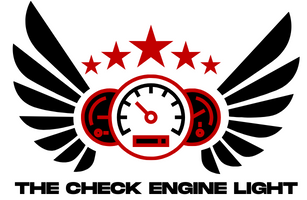

![Check Engine Light Codes + OBD II Codes [2023 Update]](https://thecheckenginelight.com/wp-content/uploads/2023/10/Check-Engine-Light-Codes-OBD-II-Codes-2023-Update-1400x500.jpg)
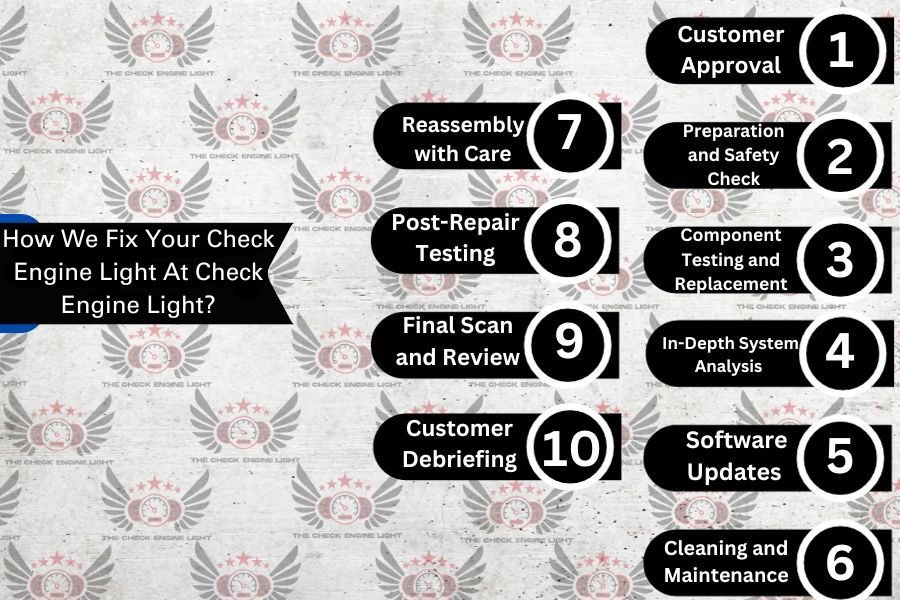
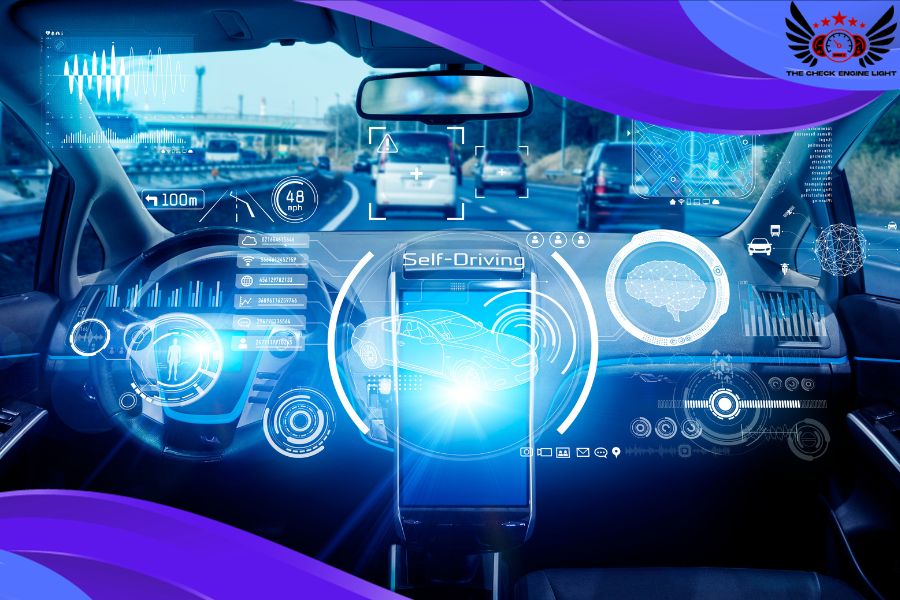
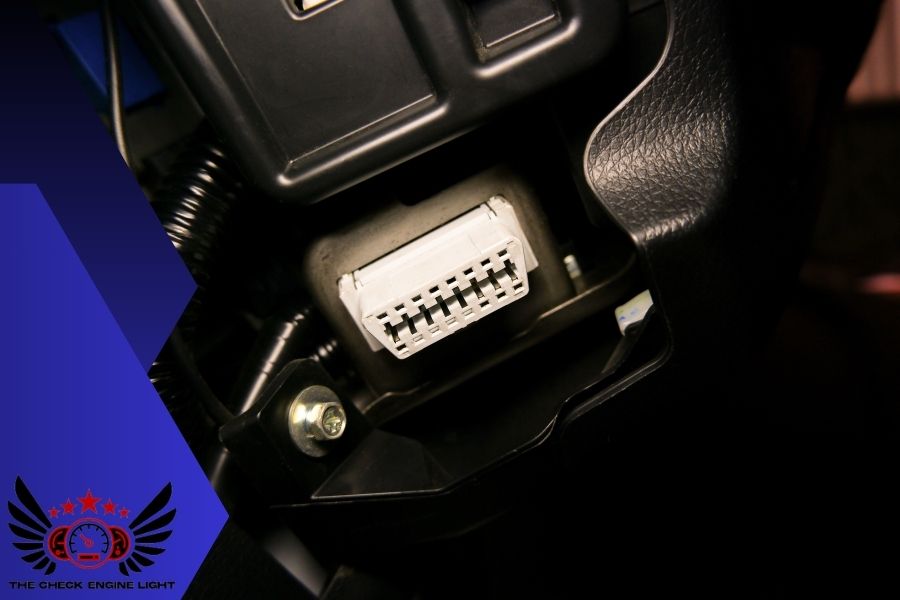
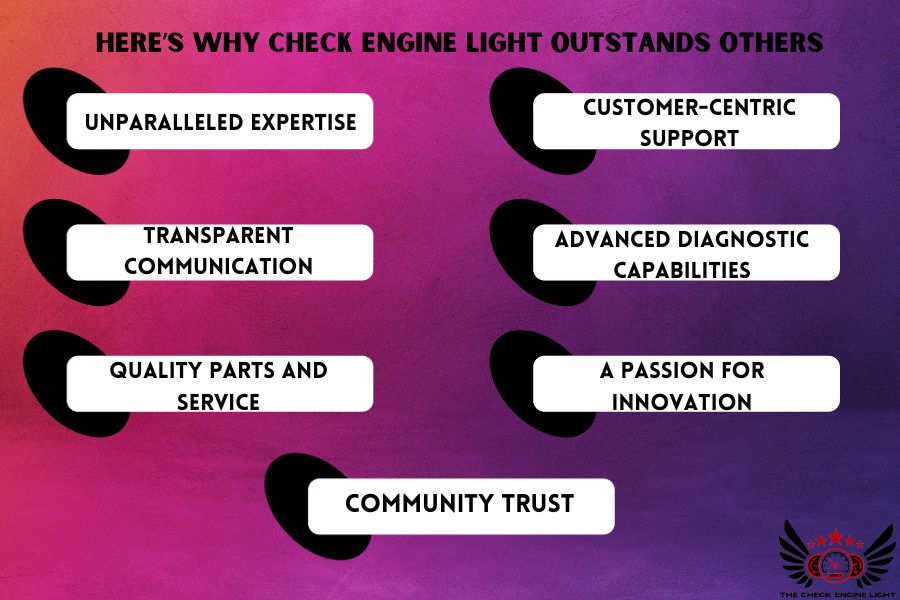
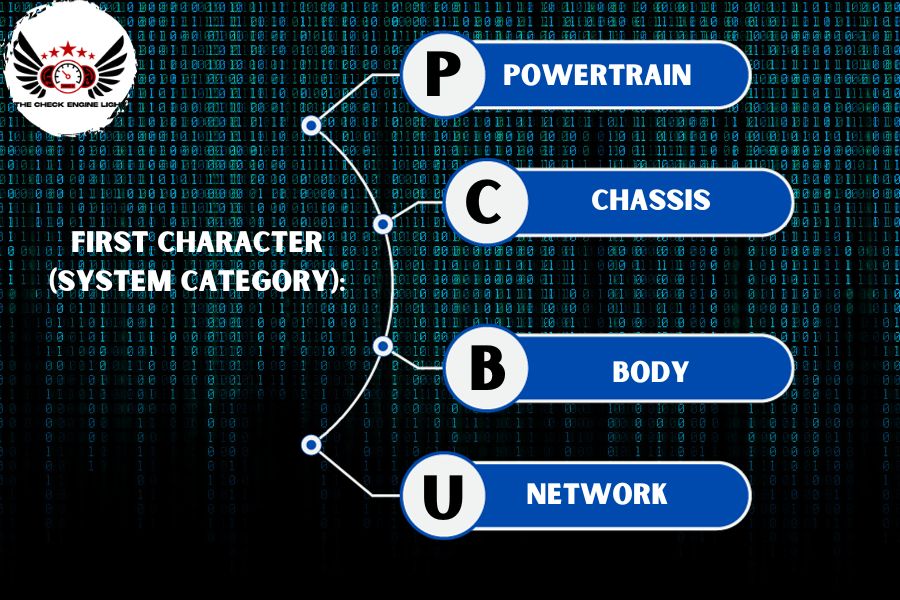
![an pic for Code p0420 Check Engine Light Fully Explained [2024]](https://thecheckenginelight.com/wp-content/uploads/2024/02/Code-p0420-Check-Engine-Light-Fully-Explained-2024-364x225.jpg)
